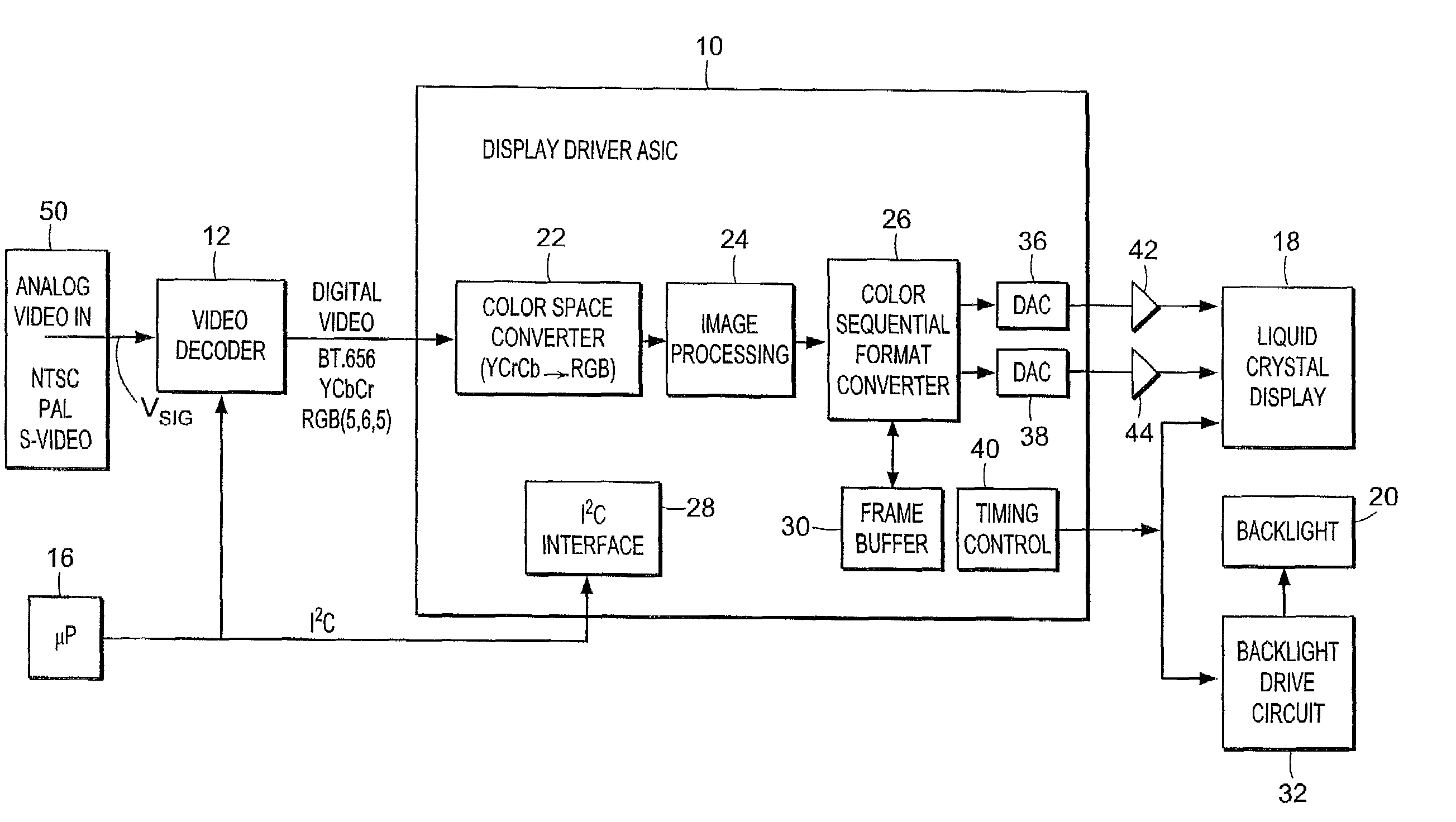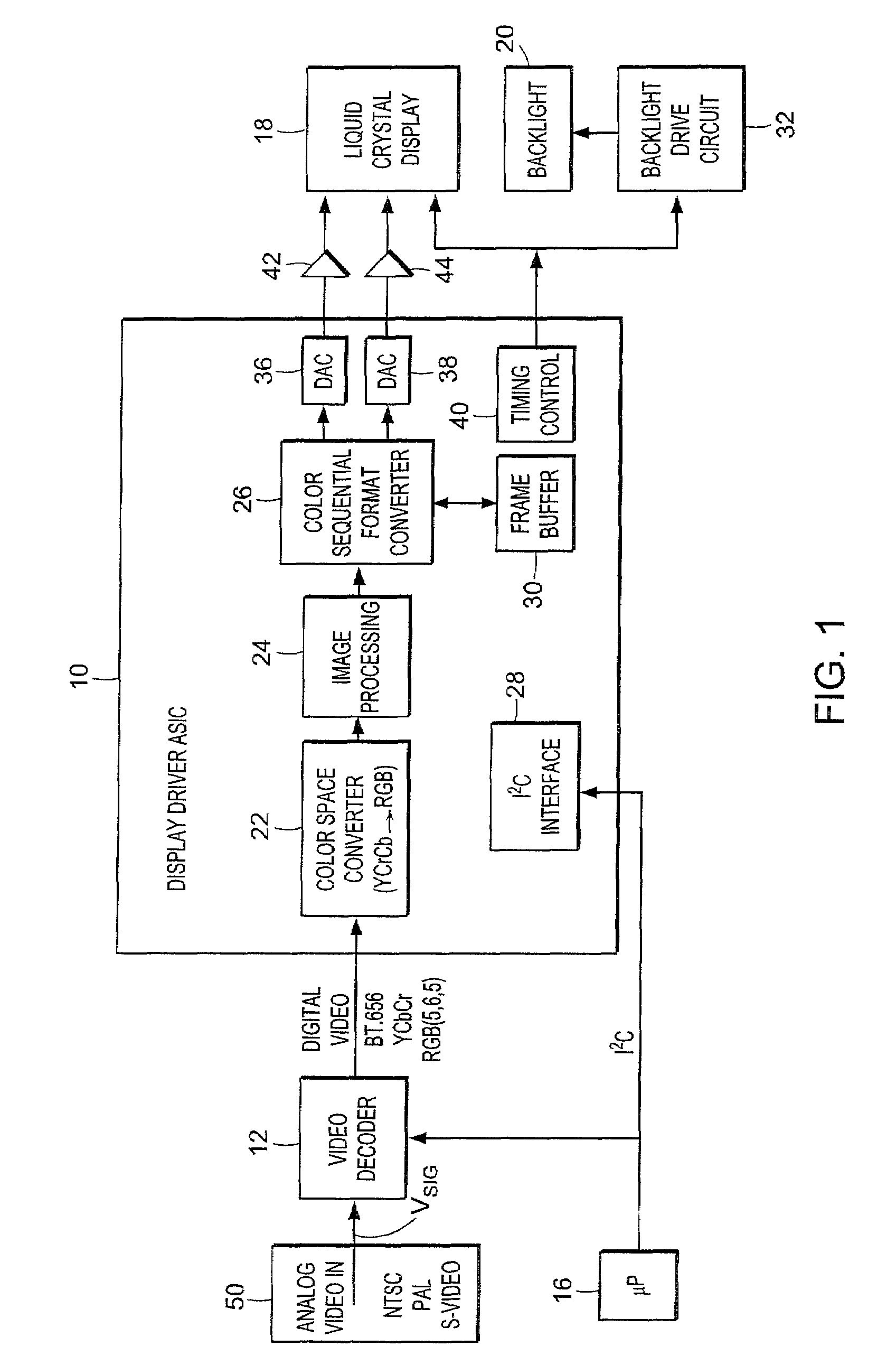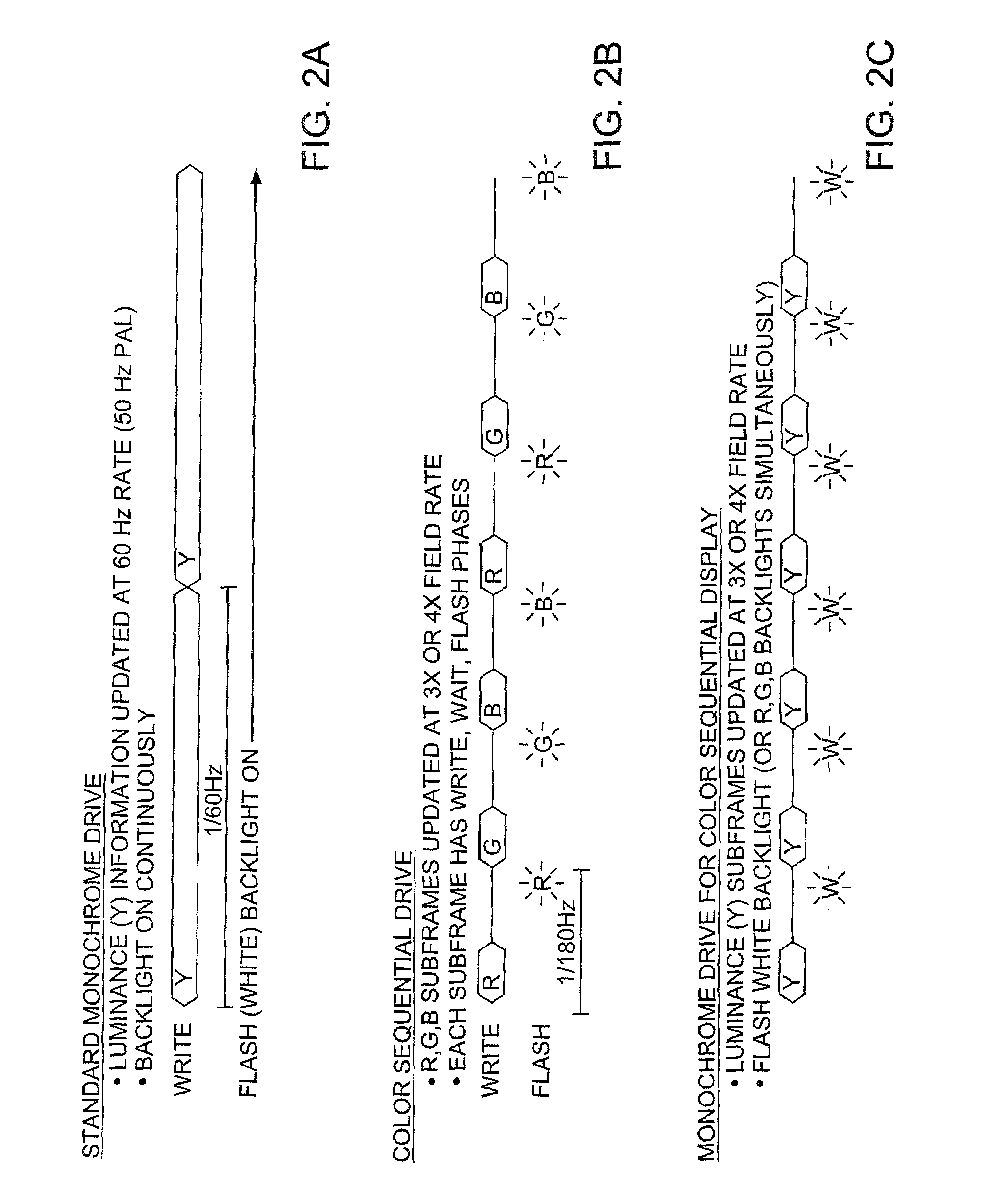Color/mono switched display
a technology of switching display and monochrome, applied in the field of color/mono switching display, to achieve the effect of simple and efficient manner
- Summary
- Abstract
- Description
- Claims
- Application Information
AI Technical Summary
Benefits of technology
Problems solved by technology
Method used
Image
Examples
Embodiment Construction
[0018]A first embodiment of a display system will now be described in connection with the block diagram of FIG. 1. Analog video signals in composite (NTSC / PAL) or S-Video formats from a video source 50 such as a video camera or video broadcast station are coupled to a video decoder 12. The decoder converts the analog signals to digital signals under the control of microprocessor 16 and extracts various components of the standard composite video signal Vsig and outputs digital video in any of several formats, including BT.656 with embedded sync, YCrCb with separate sync, or Red Green Blue (RGB) color signals. Note: The video decoder 12 is not needed if a digital video signal is available.
[0019]A display driver ASIC 10 accepts digital video input in standard format and outputs analog video to display 18 in color sequential format and generates timing and control signals for display 18 and external backlight drive circuit 32. A color space converter 22 converts video data to or from th...
PUM
 Login to View More
Login to View More Abstract
Description
Claims
Application Information
 Login to View More
Login to View More - R&D
- Intellectual Property
- Life Sciences
- Materials
- Tech Scout
- Unparalleled Data Quality
- Higher Quality Content
- 60% Fewer Hallucinations
Browse by: Latest US Patents, China's latest patents, Technical Efficacy Thesaurus, Application Domain, Technology Topic, Popular Technical Reports.
© 2025 PatSnap. All rights reserved.Legal|Privacy policy|Modern Slavery Act Transparency Statement|Sitemap|About US| Contact US: help@patsnap.com



